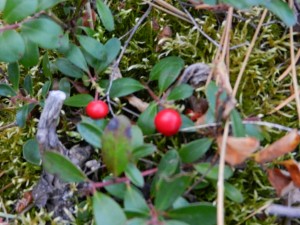
News/Reports
Drywilliam Lake ER #60 Overview: Biological and Physical
Nechako Plateau. Though relief is not pronounced, the southern part of the reserve has a southeast aspect while the northern portion slopes gently to the northwest. Soils are well drained and there are no streams or water bodies within the reserve.
These plants are common in southern British Columbia but in the Sub-boreal Spruce Zone they occur only as isolated populations. The well-spaced veteran Douglas-fir trees, though not tall by coastal standards, are large and very old. There is some Douglas-fir regeneration. White spruce is extensive in the northern part of the reserve.
The Douglas-fir stands have an understory characterized by either common snowberry or by prickly rose and kinnikinnick. Groves of aspen with shrubs like willow and Saskatoon, and small openings dominated by needlegrasses and blue wildrye, are also present. Other plant communities are believed to be present but not yet described.
Anthropogenic modifications have shaped the habitat within this reserve. A gravel pit in the middle of the reserve has been blocked off to allow natural revegetation. The vegetation within the reserve has been affected by fire and probably by highway construction in the past. Also, the north half of the reserve was extensively logged in the
early 20th century (approximately 1912), and crown lands adjacent to the reserve have been designated for wildlife habitat preservation.
The fauna has not been systematically surveyed, but Snowshoe Hares, Coyotes, and Black Bears have been seen, as well as Moose and Mule Deer droppings. Ruffed Grouse, Great Horned Owls, Bald Eagles, and Red-tailed Hawks have been noted at the reserve. The reserve and adjacent lands provide high-capability winter range for Mule Deer and Moose.
CLIMATE CHANGE:
As this reserve has been designated for the purpose of forest research, it will be especially useful in observing the adaptive responses of forest systems in the face of climate change. It has been projected that warmer temperatures and changed annual precipitation in British Columbia’s interior will encourage the proliferation of the Douglas-fir forest communities.
Flora:
aspen, trembling (Populus tremuloides)
ceanothus , redstem (Ceanothus sanguineus )
Douglas-fir (Pseudotsuga menziesii)
kinnikinnick (Arctostaphylos uva-ursi)
needlegrass (Stipa spp.)
rose, prickly (Rosa acicularis)
Saskatoon (Amelanchier alnifolia.)
snowberry, common (Symphoricarpos albus)
spruce, white (Picea glauca)
wildrye, blue (Elymus glaucus)
willow (Salix spp.)
Fauna
Bear, American Black (Ursus americanus)
Coyote (Canis latrans)
Deer, Mule (Odocoileus hemionus)
Eagle, Bald (Haliaeetus leucocephalus)
Grouse, Ruffed (Bonasa umbellus)

